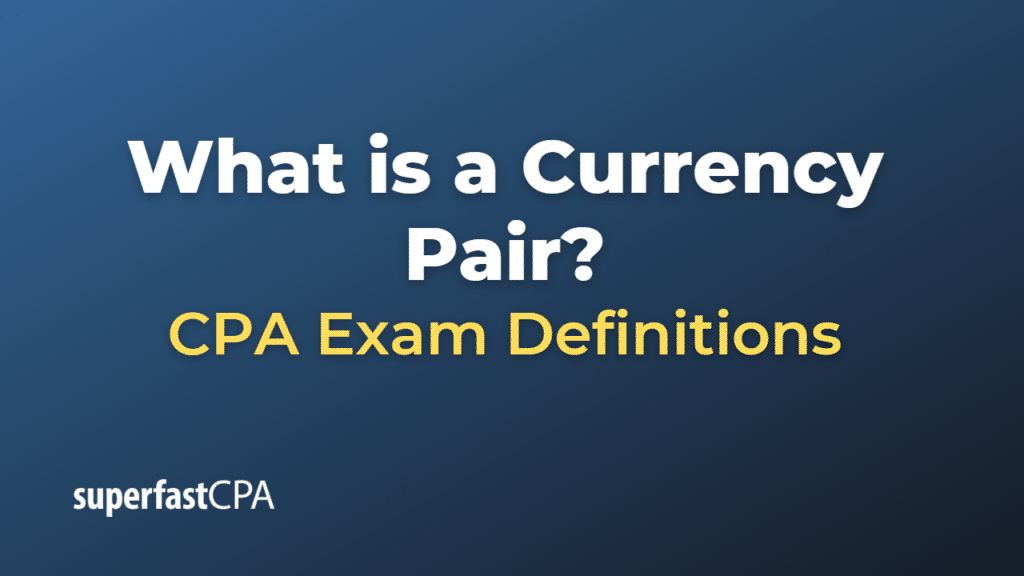Currency Pair
A currency pair is the quotation of two different currencies, with the value of one currency being quoted against the other. The first listed currency of a currency pair is called the base currency, and the second currency is called the quote currency.
Currency pairs compare the value of one currency to another—the base currency (or the first one) versus the second, or the quote currency. It indicates how much of the quote currency is needed to purchase one unit of the base currency.
For example, in the currency pair EUR/USD, EUR is the base currency and USD is the quote currency. If EUR/USD is trading at 1.20, that means 1 Euro can be exchanged for 1.20 US dollars.
Currency pairs are often used in forex (foreign exchange) trading, where traders attempt to profit from the fluctuations in the relative value of pairs. The most frequently traded currency pairs are called the “Majors” and they include pairs like EUR/USD, USD/JPY, GBP/USD, USD/CHF, AUD/USD, and USD/CAD.
Example of a Currency Pair
Let’s consider the currency pair EUR/USD, one of the most frequently traded pairs in the forex market.
As mentioned, in the currency pair EUR/USD, EUR is the base currency and USD is the quote currency. The value of the pair indicates how many U.S. dollars (the quote currency) are needed to purchase one euro (the base currency).
For example, if the EUR/USD pair is trading at 1.20, that means you need $1.20 to buy one euro.
Now, let’s say a forex trader believes that the euro is going to appreciate against the U.S. dollar. The trader could buy the EUR/USD pair at 1.20. If the euro does appreciate and the EUR/USD pair increases to 1.25, the trader could sell the pair at this higher rate. For every euro the trader initially bought, they would now get $1.25, making a profit from the change in exchange rate.
On the other hand, if the euro depreciates and the EUR/USD pair decreases to 1.15, then the trader would make a loss if they sell at this rate. They would only get $1.15 for every euro they initially bought for $1.20.
It’s important to note that forex trading can be risky, as exchange rates can fluctuate rapidly and unpredictably due to a wide range of factors. These include economic indicators, geopolitical events, changes in interest rates, and market sentiment. Therefore, it’s recommended to thoroughly understand the risks and mechanics of forex trading before getting involved.













